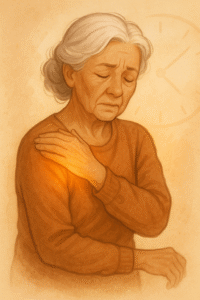Polymyalgia Rheumatica (PMR) is an inflammatory autoimmune disease that causes stiffness and aching in large muscle groups, especially around the shoulders, neck, upper arms, hips, and thighs. It typically develops suddenly in people over age 50, and symptoms are often worse in the morning or after inactivity.
Unlike muscle diseases like polymyositis, PMR does not cause muscle weakness—only pain and stiffness. It is closely linked to Giant Cell Arteritis (GCA), and both conditions may occur together.

